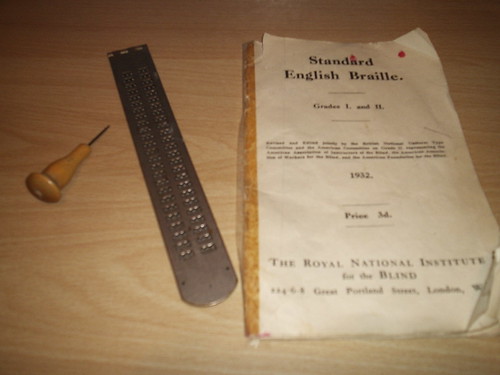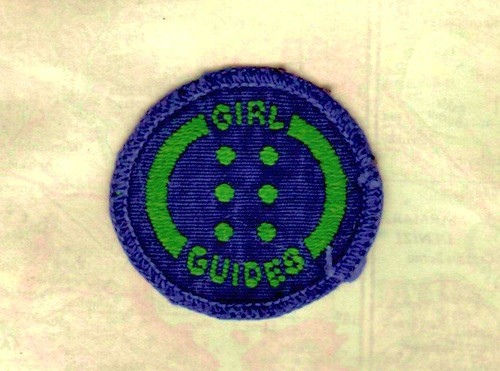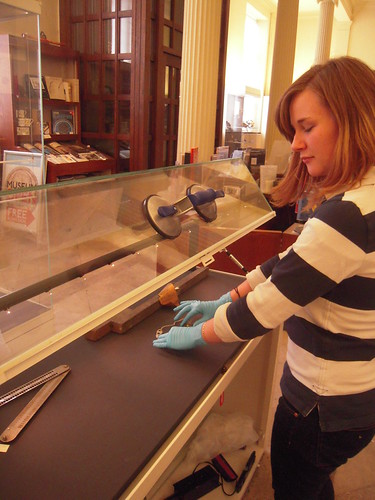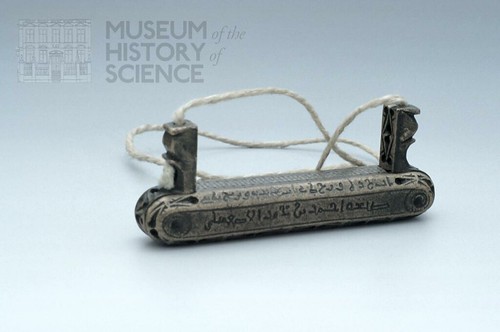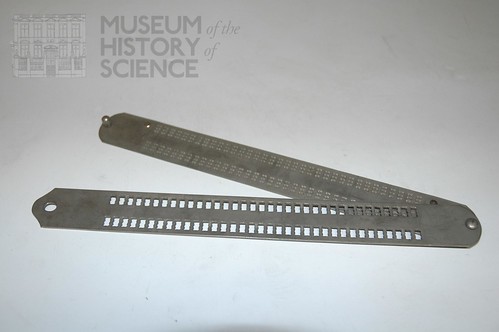One Mystery Solved! Two to go…
Wednesday, May 9th, 2012The traces team would like to extend our appreciation to three museum patrons who have successfully identified one of the three unknown objects in the ‘instruments without a trace’ case.
Mr. Nick Davies was the first to suggest that object #10948, the unidentified pivoted metal plates, had something to do with Braille writing in a blog comment.
Alexander S. Mentis, Major, U.S. Army, directed us to several websites which showed us how a Braille slate was used with a stylus to emboss paper. It was our first bit of visual evidence.
Mrs. Celia G Kellett kindly emailed the museum, sharing her experience using the Braille writing frame. She also included some wonderful photos including a teaching handbook. Mrs. Kellett had the following story to share :
“I immediately recognised the object, 10948, as a Braille Writing frame.
My attachments show photographs, which I took last night, of the Braille
Frame and Braille Teaching Handbook, which were given to me by my blind
piano teacher circa 1956/7, and the Girl Guides badge I received upon
reaching a basic standard of reading and writing braille. The frame
holds the paper whilst letters are punched by a series of dots, working
from left to right. Such frames are still in use today, but more modern
ones are available.”
The MHS can now add this information to the object record. Many thanks to Mr. Davies, Major Mentis, and Mrs. Kellett for making this possible.
Can you help us build on this success by discovering the uses and stories for our other two mystery objects? Please feel free to leave any ideas in the blog comments.
